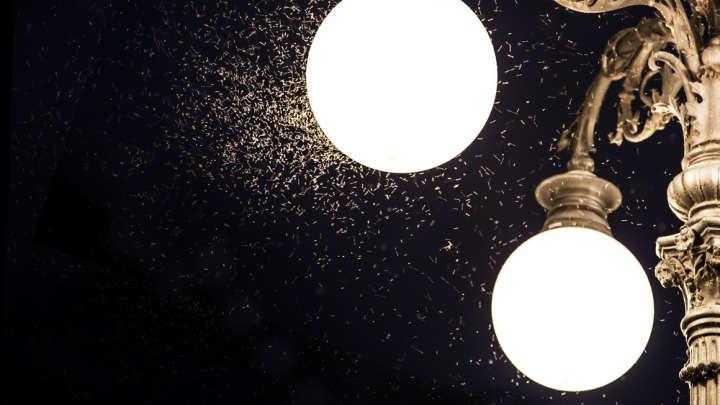A Missing Piece Of The “Insect Apocalypse” Puzzle Has Been Highlighted
Mounting evidence is suggesting that street lamps and city lights could be the missing piece of the “insect apocalypse” puzzle.
A new meta-analysis, published in the journal Biological Conservation, has sifted through over 150 studies looking at the effect of light pollution on insect populations across the world.
Habitat loss, insecticides, invasive species, and climate change are frequently cited as the prime suspects behind the global collapse of insect populations. However, the new study has suggested the constant hum of artificial light could also be a hugely overlooked factor in the world’s rapid decline of insect populations due to its looming effect on every aspect of insects’ lives, from development and migration to foraging and reproduction.
As just a few examples, nocturnal insects that use the Moon or stars as a navigational tool, like moths or dung beetles, can also become disorientated and distracted by the presence of streetlights. Equally, artificial light could illuminate a migrating bug and make it easy prey for a predator. A number of insects also use bioluminescence to communicate and reproduce, which would understandably be affected by an excess of artificial light.
Previous research on the collapse of the world’s bugs suggests there’s been a 2.5 percent rate of annual loss of insects already over the last two to three decades. If current trends continue, it’s argued that up to 40 percent of the world’s insect species could face extinction within the coming decades.
“Just as was the case for early climate change science, we have to take the Insect Apocalypse seriously,” Dr James Karl Fischer of the Zoological Lighting Institute, who was not directly involved with the research, commented on the new study.
“Insects are lynch-pins of the environment and necessary for other kinds of animals to survive; and a diversity of insects is crucial to maintaining our own food supply.“
Compared to climate change and the intensification of agriculture, which would require profound social and political changes, the research argues that the problem of artificial light is comparatively easy to fix. Forms of lighting that are less disruptive to wildlife could be developed and rolled out, especially in rural areas where insects are most abundant. Furthermore, policy changes could help to reduce the amount of unnecessary lighting used in offices and businesses.
“The amount of personal control we have here gives us a bit of hope. It is an easy matter to eliminate, reduce or change the ecologically devastating artificial lighting in and on our homes, schools, businesses if we want to, simply by turning off exterior lights,” continued Dr Fischer.
“But we have to want to, and be willing to explore alternatives to the functions those lights currently serve.”



